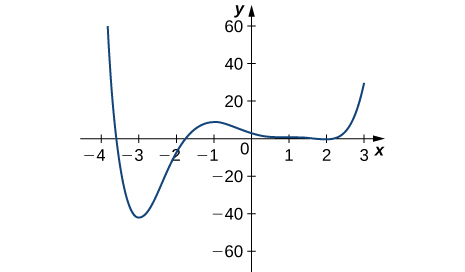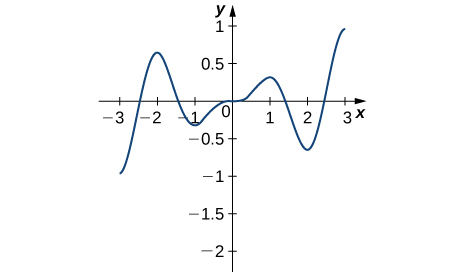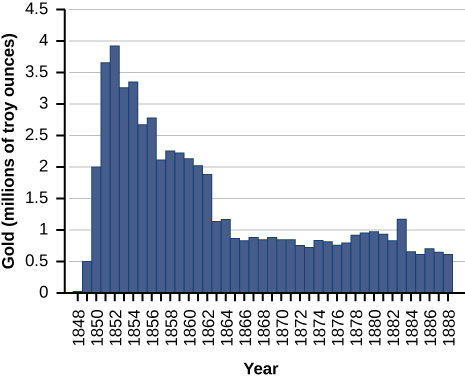4.2E: Maxima and Minima Exercises
- Last updated
- Jun 6, 2019
- Save as PDF
- Page ID
- 20639
( \newcommand{\kernel}{\mathrm{null}\,}\)
4.2: Maxima and Minima Exercises
90) In precalculus, you learned a formula for the position of the maximum or minimum of a quadratic equation
91) If you are finding an absolute minimum over an interval
Solution: Answers may vary
92) If you are examining a function over an interval
93) When you are checking for critical points, explain why you also need to determine points where
Solution: Answers will vary
94) Can you have a finite absolute maximum for
95) Can you have a finite absolute maximum for
- Answer:
- No; answers will vary
96) Let
97) Is it possible to have more than one absolute maximum? Use a graphical argument to prove your hypothesis.
- Answer:
- Since the absolute maximum is the function (output) value rather than the x value, the answer is no; answers will vary
98) Is it possible to have no absolute minimum or maximum for a function? If so, construct such a function. If not, explain why this is not possible.
99) [T] Graph the function
- Answer:
- When
For the following exercises, determine where the local and absolute maxima and minima occur on the graph given. Assume domains are closed intervals unless otherwise specified.
100)

101)

- Answer:
- Absolute minimum at 3; Absolute maximum at −2.2; local minima at −2, 1; local maxima at −1, 2
102)

103)

- Answer:
- Absolute minima at −2, 2; absolute maxima at −2.5, 2.5; local minimum at 0; local maxima at −1, 1
For the following problems, draw graphs of
104) Absolute maximum at
105) Absolute minimum at
Solution: Answers may vary.
106) Absolute maximum at
107) Absolute maxima at
Solution: Answers may vary.
For the following exercises, find the critical points in the domains of the following functions.
108)
109)
- Answer:
110)
111)
- Answer:
- None
112)
113)
- Answer:
114)
115)
- Answer:
- None
116)
117)
- Answer:
For the following exercises, find the absolute maxima and minima for the functions over the specified domain.
118)
119)
- Answer:
- Absolute maximum is
120)
121)
- Answer:
- Absolute minimum:
122)
123)
- Answer:
- Absolute maximum:
124)
125)
- Answer:
- Absolute maximum:
126)
127)
- Answer:
- Absolute maximum is
128)
For the following exercises, find the local and absolute minima and maxima (as ordered pairs) for the functions over
129)
- Answer:
- Absolute minimum:
130)
131)
- Answer:
- Absolute minimum:
132)
133)
- Answer:
- Local maximum:
134)
For the following functions, use a calculator to graph the function and to estimate the absolute and local maxima and minima. Then, solve for them explicitly.
135) [T]
- Answer:
- Absolute maximum:
136) [T]
137) [T]
- Answer:
- Local maximum:
138) [T]
139) [T]
- Answer:
- Absolute maximum:
140) A company that produces cell phones has a cost function of
141) A ball is thrown into the air and its position is given by
- Answer:
For the following exercises, consider the production of gold during the California gold rush (1848–1888). The production of gold can be modeled by

142) Find when the maximum (local and global) gold production occurred, and the amount of gold produced during that maximum.
143) Find when the minimum (local and global) gold production occurred. What was the amount of gold produced during this minimum?
- Answer:
- The global minimum was in 1848, when no gold was produced.
Find the critical points, maxima, and minima for the following piecewise functions.
144)
145)
- Answer:
- Absolute minima:
For the following exercises, find the critical points of the following generic functions. Are they maxima, minima, or neither? State the necessary conditions.
146)
147)
- Answer:
- No maxima/minima if

